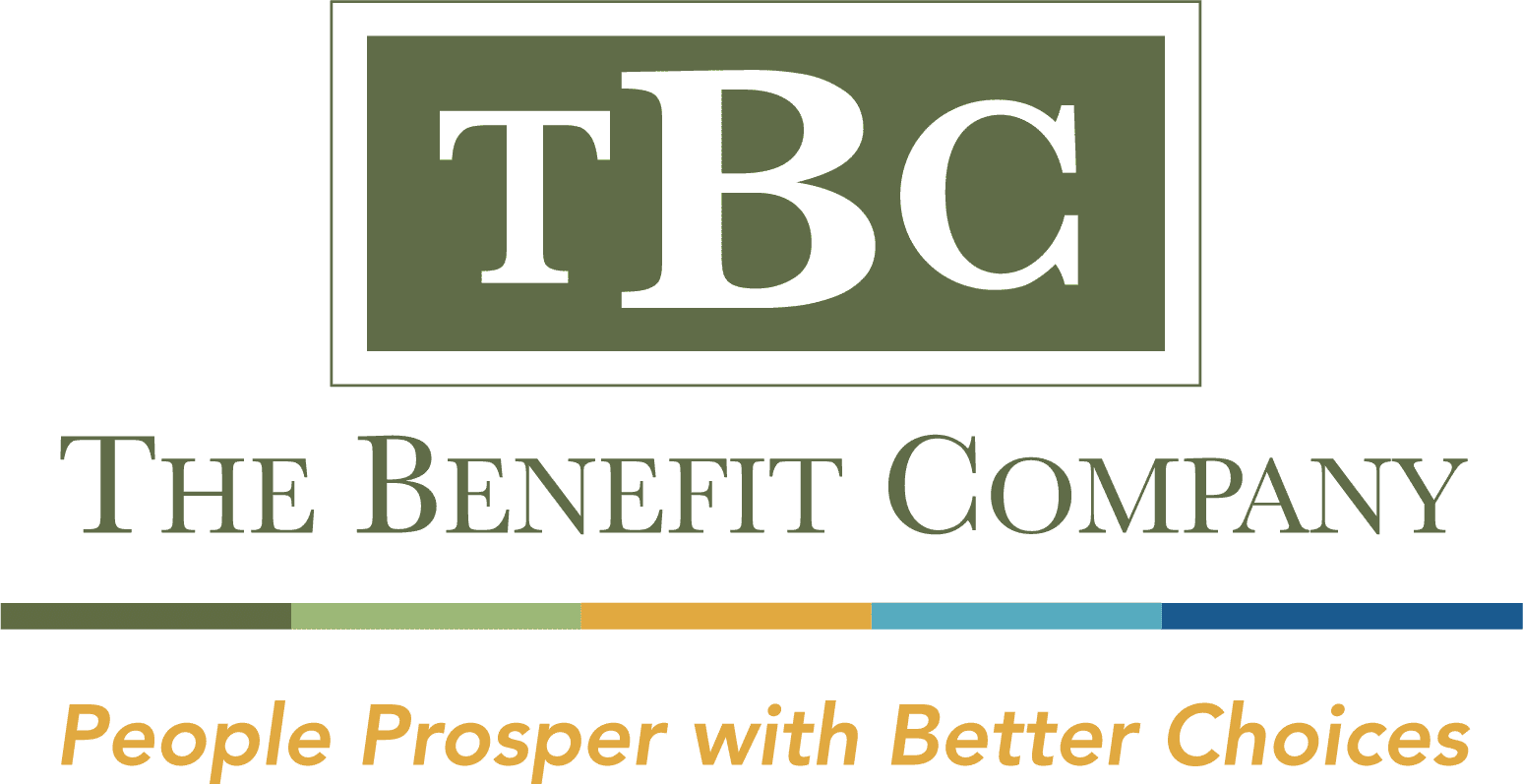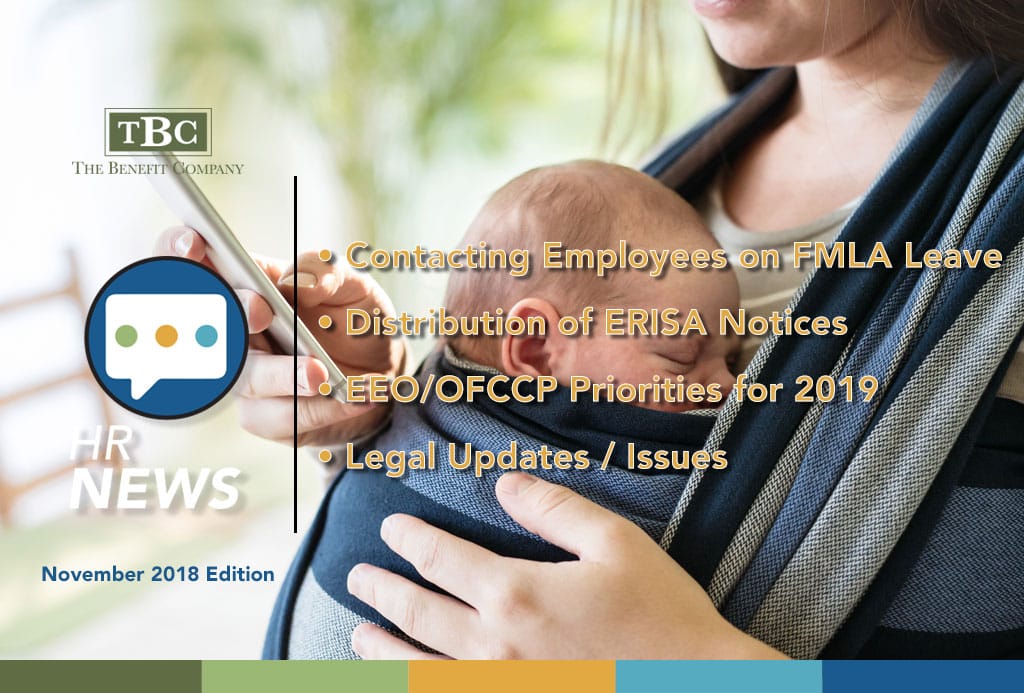HR Legal Issues/Updates:
- DOL intends to issue a Notice of Proposed Rulemaking in March 2019, to determine the appropriate salary level for exemption of executive, administrative and professional employees.
- The Social Security Administration announced that Social Security and Supplemental Security Income benefits will provide a 8% cost-of-living adjustment in 2019.
- Charges filed with the EEOC alleging sexual harassment increased by 12% in FY 2018, from FY 2017. And, the EEOC recovered almost $70M for the victims of sexual harassment through litigation and administrative enforcement in FY 2018, up from $47.5M in FY 2017.
- The IRS announced that eligible employers who provide paid FMLA leave to their employees may be able to qualify for a new business credit for tax years 2018 and 2019. See IRS Notice 2018-71 for details.
- The U.S. Department of Labor’s Payroll Audit Independent Determination (PAID) pilot program was due to expire in October, but it has been extended an additional 6 months. This program offers employers an avenue to quickly resolve potential overtime and minimum wage violations.
Contacting Employees on FMLA Leave
As HR professionals, we can get a little queasy when someone applies for FMLA leave. Is it legit? What has the supervisor said to Susie that could get the company in trouble? Will Bill string out the FMLA leave for benefit continuation purposes, and then leave the company? Geez. Well, here are some Q&As you may find helpful. Even if they don’t help you answer these questions.
- Can you contact an employee on FMLA and ask them to return to work?
- Probably no. Employers are prohibited from interfering with an employee’s exercise of FMLA rights, so you can’t require that an employee work while on FMLA leave. However, this doesn’t mean you can’t contact them about a work-related matter…a short phone call to pass on or request knowledge or updates probably won’t amount to interference. But please don’t ask them to come to the office and process payroll!
- Can you contact the employee on FMLA leave about a promotional opportunity they might want to apply for?
- Probably yes. Probably best not to ask them to come to the office to discuss it, or to apply for the position in person, but since this is not asking them to ‘work’ while on leave, this should be ok.
- If you are conducting a workplace investigation and need the employee on FMLA’s input, can you contact them to ask questions?
- This is a tricky one. Investigations are usually time-sensitive, so you want to move it along. But, do you want to risk an interference claim or maybe even a retaliation claim from the employee? Here are a few thoughts to consider before moving forward:
- Are you following your standard internal investigation procedure, and would have taken the same step had the employee not been on leave?
- Is the employee due back from leave soon enough that perhaps you could wait until he returns to work, and talk with him then?
- Does his health preclude him from being able to provide valuable input?
If you really do need to talk with the employee now, best to do it over the phone. If it is imperative that you bring the employee into the office to talk, consider not counting that time against his FMLA allotment and paying him for that time.
- Can you contact the employee on FMLA leave to discuss his return to work?
- Yes! And you will want to, to confirm his projected return to work date so his department can plan for his return, and also to make sure there are no ADA accommodation issues, depending on the reason for the FMLA leave.
Distribution of ERISA Notices
Open Enrollment season is here! An important requirement of this happy time of year is making sure your employees have all their required legal notices. The printing cost for the pile of documents required for distribution can be very burdensome to an employer, so thinking about electronic distribution makes sense. Although logic in 2018 would say that the number of employees without internet access – if not on a computer at work, certainly on their smartphone – is extremely small, it may be risky for an employer to decide to only distribute ERISA notices electronically without carefully considering the requirements. Please consider these points before making the decision:
- ERISA requires that the notices are prepared and furnished “in a manner consistent with applicable style, format, and content requirements.” Be sure your electronic versions can comply with the required formatting.
- The ERISA documents must be provided using “measures reasonably calculated to ensure actual receipt.” If you use the postal service, you are sure to follow-up on undeliverable or returned mail. With electronic delivery, note the following:
- For distribution through your company’s intranet or email system, your employees must have “regular access” to it as part of their regular job duties. Having access only through a kiosk is not sufficient access to comply with ERISA.
- For distribution to those without regular access to your intranet, electronic delivery will only comply with ERISA if the recipient first affirmatively consents to receive the material electronically, provides an electronic address, and demonstrates their ability to access the material this way – i.e., most easily accomplished by the recipient responding via email to the consent request.
- In addition, all recipients must be notified of their right to receive paper copies of the documents, at no charge, and reasonable steps must be taken to safeguard their personal benefits information. Using the return-receipt feature in email is also suggested…but very burdensome for a large employer.
There is definitely a cost-benefit analysis to be done, to determine if electronic distribution of ERISA notices makes sense for your company.
EEO/OFCCP priorities for 2019
At a recent Ogletree Deakins HR conference in Atlanta, the southeast regional director of the U.S. Department of Labor shared some intel on two major areas of priority for the agency in 2019. They apply to federal government contractors required to have annual Affirmative Action Programs (AAP):
- AAP verification: The OFCCP is very concerned that although employers confirm in contracting that they have current AAPs, they may not have them at all, or they may not update them annually.
- Targeted 503 and Vietnam Era Veteran audits: These are the AAPs for disabled individuals and Vietnam Era veterans. Identifying outreach sources and documenting employer efforts to increase their workforce with these two groups is challenging for employers, but very important to assure a truly diverse workplace. And doing so is the law for government contractors. Tips highlighted in the conference include:
- Be sure to document outreach efforts, and evaluate qualitative and quantitative results;
- Make sure that physical and mental requirements are truly job-related, and consistent with business necessity;
- Make sure your “knock out” interview questions don’t automatically eliminate those with disabilities;
- Make sure your employment application allows someone to get an accommodation to be able to apply;
- Make sure that your post-offer medical screenings have an individual assessment for each position.
Some additional reminders were provided concerning avoiding the appearance of systemic discrimination. Tips along these lines included the following:
- Keep accurate hire and termination records
- Have a consistent, documented selection process
- Train your supervisors on interviewing and selection
- Have specific disposition codes in your applicant logs, as to why individuals were not selected
- Be sure applicants are not ‘steered’ to certain stereotypical positions
We know what the government will be looking for—let’s make sure we are ready for them!
++++++++++++++++++++++++++++++++++++++++++++++++++++++++++++++++++++++++++++++
This newsletter is not intended to provide legal guidance to you. We welcome your input on topics you would like to learn more about. We encourage you to contact the author of this newsletter, Caryl Kuchman, SPHR, SHRM-SCP at 803.729.8398 or at [email protected] if you have questions on any information presented.
 The Benefit Company
The Benefit Company